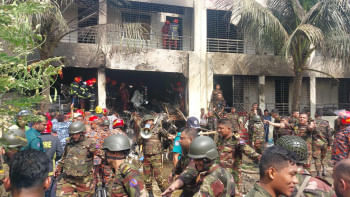Violence: An inevitable outcome of a world unequal

What do you think about when you think about violence against women? Do you think about sexual harassment on the streets? Or on public transportation, like buses? Do you think about the criminal justice system? Do you think of incarcerated women? Do you think about workplace harassment of women? Do you think of violence taking place within institutions – schools, hospitals, universities, churches, and mosques? Or do you think about domestic violence? Marital rape? Wife-beating?
If you answered yes to more than one of the above, congratulations! You are among those few who recognise that violence against women is structurally produced – and the forms of abuse you see depend on your social location, and your identity – or plural – identities.
When I asked you to think about violence against women, the first thing that most of you thought about is probably domestic violence. One reason is perhaps the high prevalence rate of domestic violence. Recent reports suggest that about 80 percent of women in Bangladesh experience domestic violence. But, another reason is that the social structure – and its politics – hides violence against women by conflating violence against women with domestic violence, unfortunately limiting it to that, and eliding over structural and institutional violence.
In other words, we forget or suppress from consciousness, as Joshua Price puts it, that women are violated in many other spaces – including spaces that are meant to be safe. This should be no surprise, however – given that we know that women are so often abused at home – even though the dominant narrative of the home is surrounding safety.
Another way in which structural violence is hidden (in plain sight, if you will) is by creating the illusion that violence against women is a homogeneous phenomenon, when it is not, suggests Beth Richie (2000). Let us think about intersectionality – or multiple identities – as a way to understand how violence is heterogeneous across groups. In the context of Bangladesh, it is perhaps not difficult to imagine that a low-income Santal woman in Gaibandha is more likely to experience violence than a high income Muslim man, or even woman, in urban Dhaka, highlighting that identities intersect in ways that often marginalise individuals, and increase their risk of adverse experiences of violence. It highlights that racism and sexism can and does occur at the same time. This violence against Santals is structurally produced; this violence is institutional. Much like how violence against Kashmiris by the Indian Army is structurally produced. Much like how police shootings of black men in the United States is an example of institutional violence.
Clearly, the difference between these experiences are not merely location in terms of geography but location on the basis of their identities — be it racial, ethnic, religious, socioeconomic status, gender, age, mental health, disability, sexual orientation, and/or gender.
Yet another way in which structural violence is suppressed is by creating a victim-perpetrator dichotomy where the "victim" is supposed to be innocent and the "perpetrator" guilty (Price, 2012). Indeed, innocence and guilt are important in criminal activities – but when criminalisation becomes a tool of state oppression, this labelling is problematic. An excellent example is the War on Drugs that treat heroine use as a public health issue and cocaine as a legal issue (1), which some say is related to the fact that in the United States affluent whites use more heroin and low-income blacks use cocaine. So if we view cocaine users as perpetrator of crime we miss the larger picture of discrimination and racial injustice.
This victim-perpetrator dichotomy gets complicated when multiple identities come into play. And, further complicated when violence is structural, taking place within various structures. For example, when state actors – such as policemen – become "perpetrators" they are often found to be "not guilty" as the dominant narrative would suggest, and when the "victim" is a sex worker, she is no longer "innocent" because of the nature of her work. The many cases of policemen raping women (and men) in police custody speak to the legitimisation of such violence. The many cases of policemen killing people, particularly minority groups as recently seen in Gaibandha, with impunity speak to such a culture of legitimising violence. The problem is not merely the violence they perpetrate themselves but the violence that they ignore, and thus condone – and we know that it's often violence against minority groups – such as low-income, from a minority community, women – that is ignored. It is problematic because it reinforces the idea that violence, particularly against minorities – be it women or minority group members – is justified, while the state (and state actors) are absolved of violence, because they do so in the name of "protection." And when that violence is public – e.g. on the streets – it furthers the idea that certain groups of individuals – for example women – are unsafe on the streets, and should remain at home, furthering the agenda of those interested in repressing women's rights.
At the same time, the disproportionality in terms of who gets arrested and who doesn't (for example, a low-income rickshaw puller is more likely to be arrested for hitting his wife or child than a high-income businessman) should not be lost on us. That his arrest may have adverse effects on his low-income family should be a reminder of how certain groups are kept within their social class without any real hope of upward mobility.
The writer is Assistant Professor, School of Social Work, University of Buffalo.

 For all latest news, follow The Daily Star's Google News channel.
For all latest news, follow The Daily Star's Google News channel. 



Comments